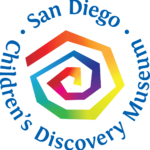Daily STREAM Activity: Acids & Bases
Test substances to determine if they're basic or acidic!
Activity best for children age 4 and up
Have you ever had some lemonade and it was so sour it made your mouth pucker? That sourness is because lemon juice is an acid. If food is bitter, like spinach, it is a base. Learning about acids and bases is an important part of learning about chemistry. Lots of different substances are either an acid or a base. We can’t go around tasting all of these different things to tell us what they are because that is not safe. So, how do we test them? Chemists use an indicator. An indicator is a special type of substance that tells us whether the item in question is more acidic or basic. Today we are going to make our own indicator liquid so we can do a chemistry experiment and be chemists in our home! This experiment takes patience, but has some really cool results!
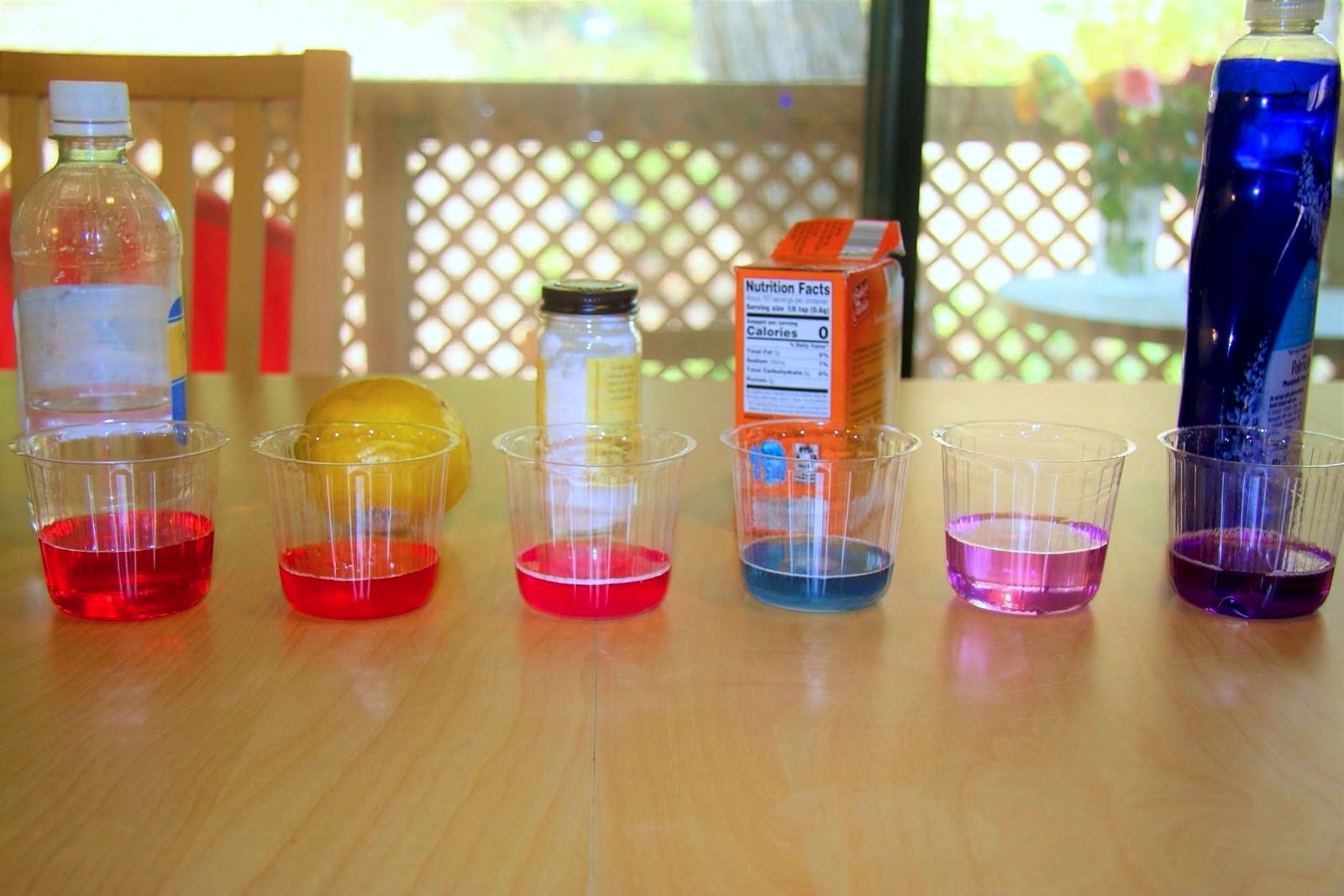
Materials you’ll need:
Large plastic container with a tight lid
Acid: vinegar or lemon juice
Weak acid: cream of tartar
Neutral: pure water
Basic: baking soda
Strong basic: dish soap
Red Cabbage
Knife
Cutting board
Strainer
Hot tap water
6 clear cups
6 spoons
Guiding Questions:
What will happen to the cabbage water when we add it to the test substances? Will it change color?
Why is the reaction happening?
Which reaction was the strongest?
Which one was the weakest?
Directions
STEP 1
Rip 4-5 cabbage leaves into small strips and place in a large container with a lid. Add hot tap water to cover the cabbage, close the lid and shake to the count of TEN! Then let it sit until it is cool and has a purple color.
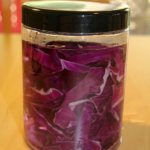
STEP 2
Pour the purple mixture (indicator liquid) through a strainer into another clear container.
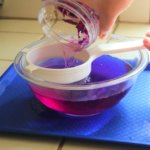
STEP 3
Place your test substances in individual cups. 1/2 tsp will be plenty.
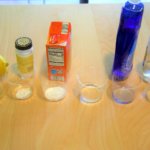
STEP 4
Pour the purple indicator liquid into the cups. Use a spoon to stir. Use a different spoon to stir each substance. Is anything happening to the purple color?
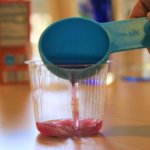
STEP 5
If the liquid turns red, that means it is a strong acid. Pink means that it is slightly acidic. Blue means that it is slightly basic. Green means it is a base. If something stays Purple, like the indicator liquid, then it is neutral. What colors did your ingredients turn?

Grown ups, are you looking for more ways to extend your child’s learning? Check out these extension activities to build upon today’s STREAM activity!
Math Extension
Count how many things are acids and how many are bases. Which one is more? Why do you think that?
Reading Connection
What’s Chemistry All About? by Alex Frith
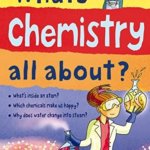
Science Connection
Make your own indicator strips by soaking white paper in the purple cabbage liquid. Take out the paper, let it dry. When the paper is dry cut it into strips. You now have your own litmus paper strips. Store them in a dry container with a lid. With a grownup’s help, test more liquids in your house like baby shampoo, coffee, tea, apple juice, etc., and see if they are acids or bases. Chart your predictions and your results just like a chemist.
Real World Connections
Acid makes food sour. What do you eat that is sour? That means it has a high acid count. If you add water, a neutral substance, it makes it less acidic. Try adding water to lemonade and see if it makes it less sour.
Share your experiments with us on Instagram by tagging @sdcdm320!
Questions about this activity? Email education@sdcdm.org

